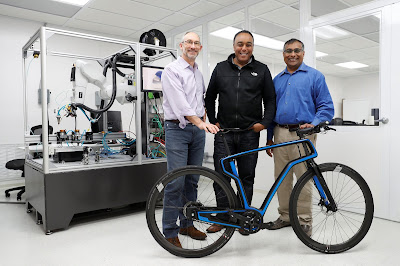First 3D Printed Carbon-Fiber Bike a 'Technological Marvel'

From Thomasnet According to Bicycling.com, the modern carbon-fiber bike is “a technological marvel” based on its superior strength over traditional metal bikes, at a fraction of the weight. So why isn’t everyone hopping on one of these top-notch bikes to pedal around town? Two reasons – the cost is insane and, say the experts at Bicycling.com, carbon-fiber can be a manufacturing nightmare. Typical problems mostly relate to quality control, in a production environment that requires lots of labor and precision, which is why the Silicon Valley startup Arevo intends to upend the process with 3D printing. The company has a prototype of the first 3D printed carbon-fiber bike, and Arevo hopes to propel the business into manufacturing ASAP. The intention is to partner with existing bike manufacturers and automate the production aspect using a robotic arm.
